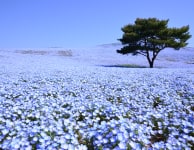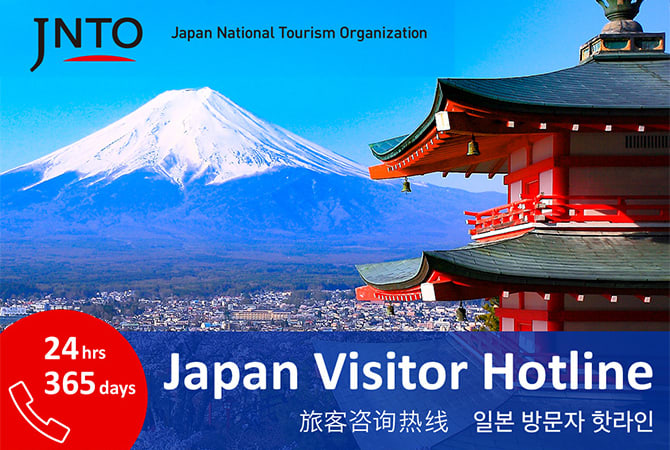

Weather & Geography
Find out the weather forecast and get up-to-date information on the seasons and Japan's geography
Weather forecast
Japan's land area stretches from the northernmost island of Hokkaido, close to Russia, to the subtropics of Okinawa. The weather varies greatly from region to region, so check the weather forecast for the areas you'll be traveling to.
Geography
Located in East Asia, Japan is a curved-shaped archipelago with the Sea of Japan along the west coast and the Pacific Ocean along the east coast. Its closest neighbors are South Korea, Russia, and Taiwan near the southernmost Okinawan islands known as Yonaguni . Japan's size is often compared to that of Germany and it is slightly smaller than the state of California and somewhat larger than the United Kingdom.
Japan's land is made up of dense forest and mountainous terrain covering 70 percent of the country, held in place by the Japan Alps —the series of mountain ranges spanning the central area of the main island of Honshu. Japan has many geologically active volcanoes and eruptions are common.
Along the coastlines and flat areas, you will find many of the major cities—in some cases built on reclaimed land. There are many beautiful beaches with some great surfing spots on the country's peninsulas—the Boso Peninsula , Izu Peninsula , and Kii Peninsula among others—as well as many places to snorkel and dive. Heading further south, you will reach the subtropics of Okinawa and its outlying islands.
National parks and protected ecological zones house a range of distinctive wildlife and geographical points of interest from Akan-Mashu National Park in the wilds of Hokkaido, to the UNESCO World Heritage accredited Ogasawara Islands located 1,000 kilometers south of Tokyo in the Pacific Ocean.
Many islands are uninhabited and nature is beginning to take some of them back in dramatic fashion—visit Tomogashima Island and its abandoned and now overgrown red-brick military buildings.
Weather through the seasons
Every season in Japan has its charms, brought by the seasonal changes in temperature and weather. Read below to learn what distinguishes each season from the rest in Japan.
Spring
A welcome break from the winter cold, spring is celebrated throughout the country with the arrival of the cherry blossoms. Starting in the south and gradually moving north, the blossoms bloom between March and May depending on your location. Cool and breezy with generally sunny skies, spring is a comfortable time to get out and explore the cities and countryside. Leading into summer, the rainy season begins in May to June.
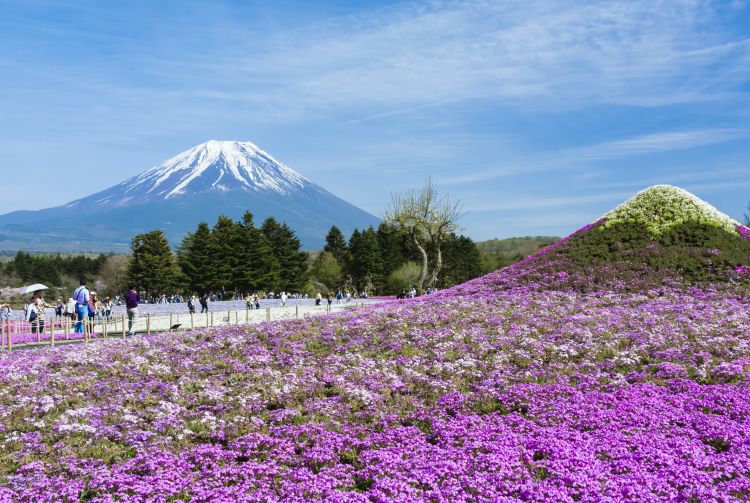
Summer
Summer throughout Japan is stiflingly hot and intensely humid—make sure to keep hydrated. The beaches are packed, firework displays explode above the nation's rivers, and street festivals are held around every corner. The mountains offer some respite from the major city cauldrons. Be aware that August and September may bring typhoons that can thwart your travel plans.

Autumn
As the weather cools, the autumn colors light-up the countryside. Starting in the northern island of Hokkaido and traveling south, the dazzling autumn leaves blanket the country between late September and early December. Similar to spring, the fall season is perfect for outdoor exploration and a great time to taste what's in Japan's larder.

Winter
The ski season begins and the northern areas are covered with Japan's peerless powder snow. The weather varies from region to region, but winter brings many sunny days and beautiful blue skies. Warm up with some hot sake and a bowl of bubbling hot-pot.
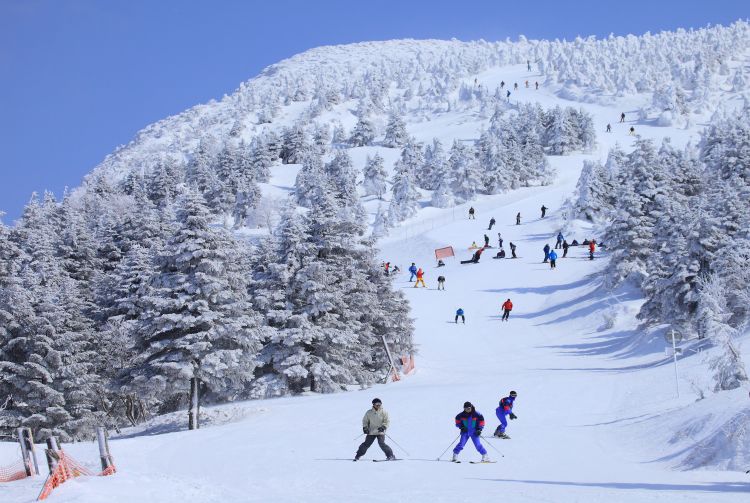
Average temperatures and precipitation
Tokyo

Kyoto
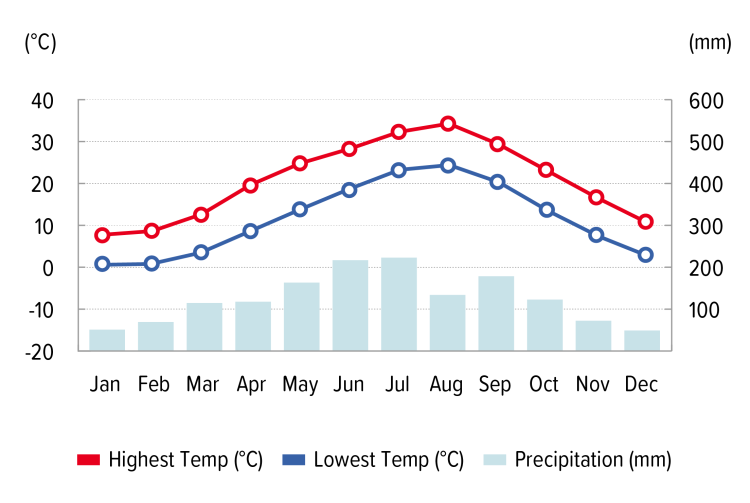
Sapporo

Sendai

Kanazawa

Fukuoka

Naha

Earthquakes and Volcanos
Located on the Pacific Ring of Fire, Japan has over 100 active volcanos. Most of them are not a threat to human activity, but it is best to check the latest news and warnings about volcanic activity in the areas where you may be traveling.
In addition, Japan is located on the fault lines of four tectonic plates, making earthquakes a common occurrence. There have been several devastating earthquakes in the last 100 years, including the Great East Japan Earthquake on March 11, 2011. Small earthquakes happen on a daily basis somewhere in Japan, and many of them are barely noticeable. However, before your trip, familiarize yourself with earthquake preparedness and make sure to locate the designated evacuation area for the buildings where you stay.




















































